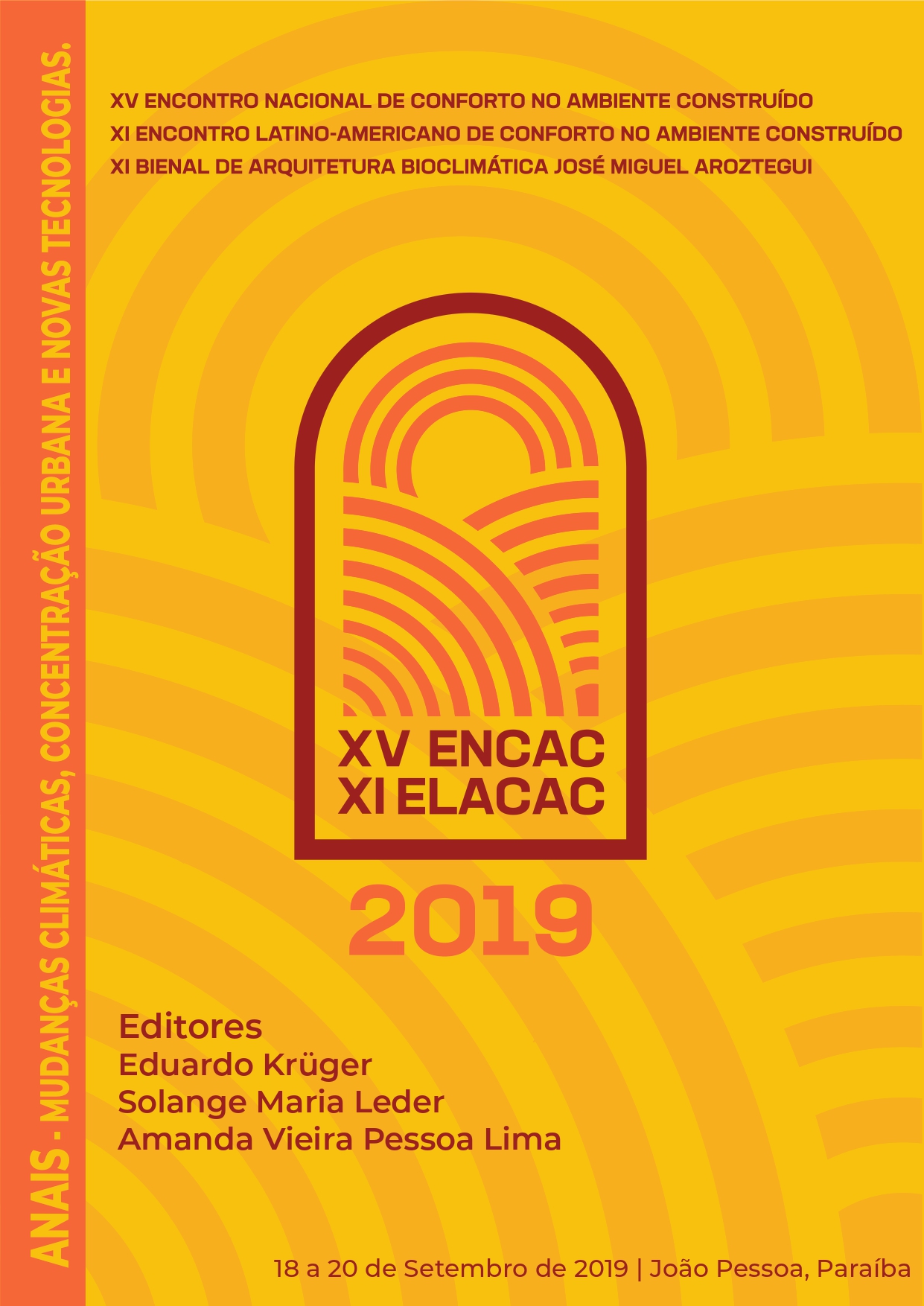A PERCEPÇÃO VISUAL E O ACIONAMENTO DA ILUMINAÇÃO ARTIFICIAL E DAS PERSIANAS EM ESPAÇOS INTERNOS
Keywords:
artificial lighting, user attitude, daylight, visual perception, HDR imagesAbstract
The users attitude over electric lighting and the blinds position has a significant impact on the energy consumption of a building. This article considers that visual perception influences the switch on electric lighting and blinds closing. The objective is to correlate the mean window luminance (Lja) and Daylight Glare Index (DGI) with the visual perception from the door position, with the artificial lighting switch on and the blinds down position. The methodology consisted of experiments conducted with 41 participants to collect their visual perception, and switch light on and blinds closing events data. Hdr image technique was applied to get luminance and DGI by using Photosphere and HdrScope software. The variables DGI and the mean window luminance (Lja) were analyzed because they were correlated with the visual perception, the switching lighting on and the blinds down position. For the DGI, the range set for the situation of the lighting off and blinds opened was between 18.4 ± 1,0 and 23.8 ± 1,0; when DGI was below 18.4 ± 1,0, the visual perception of the room is "Dark" or "Very Dark" and the occurrence was to maintain the blinds open and artificial lighting on, and above 23.8 ± 1,0, the visual perception was "Very_bright”, and there were larger events of closing blinds and switched lights on. In relation to mean window luminance, for the luminance between 1636 ± 302 cd/m² and 4981 ± 419 cd/m², the lighting was off and blinds opened. When the luminance of the window was below 1636 ± 302 cd/m², the lighting was on and the blinds opened, and above 4981 ± 419 cd/m², the blinds were closed and artificial lighting on. The conclusion is that the proposed intervals of DGI and mean window luminance can be used to simulate a building energy consumption.
Downloads
Published
How to Cite
Issue
Section
License
Copyright (c) 2023 ENCONTRO NACIONAL DE CONFORTO NO AMBIENTE CONSTRUÍDO

This work is licensed under a Creative Commons Attribution 4.0 International License.




